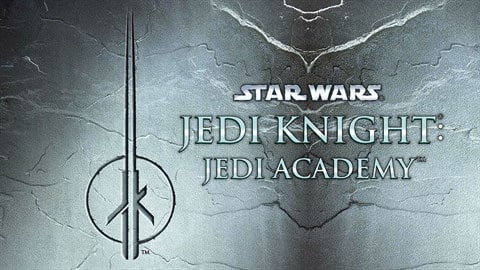In the vast expanse of the Star Wars galaxy, the concept of time is both familiar and complex. From Han Solo’s famous brag about the Millennium Falcon’s Kessel Run in “12 parsecs” to the standardized time derived from Coruscant, time in Star Wars offers a unique blend of the recognizable and the alien.
Coruscant: The Galactic Standard for Time
The heart of the galaxy, Coruscant, serves as the benchmark for time measurement in the Star Wars universe. Its orbital characteristics are surprisingly similar to Earth’s:
- A standard year (SY) or cycle on Coruscant consists of 365 days, each 24 hours long, with no leap years.
- The planet’s day is divided into 24 hours, with each hour comprising 60 minutes and each minute containing 60 seconds.
Given Coruscant’s status as the long-standing capital of the Galactic Republic and the origin of the galaxy’s humans, its time system has become the standardized dating method for the entire galaxy. This ensures that terms like cycles and days are universally understood, from smugglers to stormtroopers.
Local Time vs. Galactic Standard
However, with millions of planets in the galaxy, each with its unique rotations and solar positions, a single standardized time system can be limiting. For instance, a planet with multiple suns or different rotations would have a different concept of a “day.”
In Star Wars, when characters refer to a “rotation,” they’re talking about the local day—the time it takes for their current or nearest planet to complete one full rotation. This local day might differ significantly from the galactic standard day based on Coruscant’s rotation. For instance, in the “Star Wars: Rebels” episode “Twilight of the Apprentice,” clone Captain Rex mentions a journey to Malachor taking “two rotations,” referring to the local planetary time.
Historical Context and Calendars
Drawing parallels with Earth, the concept of time has always been a powerful tool. Historical figures like Julius Caesar and Pope Gregory XIII introduced and modified calendars, respectively, to influence their spheres of control. The Gregorian calendar, which most of the world uses today, still retains traces of the Roman Empire, such as the month “July,” named after Julius Caesar.
In the Star Wars saga, there’s little evidence of significant calendar adjustments over its vast timeline. While the Jedi-allied Republic and the New Republic might have been more inclined to change dating systems, the Sith Empire and the Galactic Empire seemed to have missed the opportunity to enforce their will by altering the calendar.
Conclusion:
Time in the Star Wars universe is a blend of the familiar and the otherworldly. While Coruscant provides a standardized measure, the vastness of the galaxy and its diverse planets ensure that time remains a relative and multifaceted concept. Whether you’re navigating the Kessel Run or trying to sync up a call between Coruscant and Tatooine, understanding time in Star Wars is crucial for any galactic traveler.
FAQ: Time Measurement in the Star Wars Universe
1. What is the standard measure of time in Star Wars?
- Time in the Star Wars universe is standardized based on the orbital characteristics of Coruscant, the galactic capital. A standard year (SY) on Coruscant consists of 365 days, each 24 hours long.
2. How does Coruscant’s time compare to Earth’s?
- Surprisingly, Coruscant’s time system is quite similar to Earth’s. A day on Coruscant is divided into 24 hours, with each hour comprising 60 minutes and each minute containing 60 seconds.
3. What does “rotation” mean in Star Wars?
- In the Star Wars context, a “rotation” refers to the local day of a planet, which is the time it takes for that planet to complete one full rotation. This can differ significantly from the galactic standard day based on Coruscant’s rotation.
4. Why is Coruscant’s time system considered the standard?
- Given Coruscant’s status as the long-standing capital of the Galactic Republic and the believed origin of the galaxy’s humans, its time system has become the standardized dating method for the entire galaxy.
5. Are there planets with time systems different from Coruscant’s?
- Yes, with millions of planets in the galaxy, each with its unique rotations and solar positions, many planets have their own local time systems.
6. How do characters in Star Wars refer to local time?
- Characters often use the term “rotation” to refer to the local day of their current or nearest planet. For instance, two rotations would mean two local days.
7. Have there been any significant changes to the calendar in the Star Wars universe?
- There’s little evidence of major calendar adjustments in the Star Wars saga. While entities like the Jedi-allied Republic might have considered changes, empires like the Sith and Galactic Empire did not seem to modify the calendar.
8. Are there any parallels between Earth’s and Star Wars’ time systems?
- Yes, just as Earth has seen calendar modifications by influential figures like Julius Caesar, the Star Wars universe hints at potential calendar influences by major galactic entities, though specific changes are not detailed.
9. How do characters in Star Wars manage time differences across planets?
- While Coruscant’s time serves as a standard, characters often refer to local time (rotations) when on or near specific planets to avoid confusion.
10. Are there any other time-related terms unique to Star Wars?
- Terms like “cycle” are used to refer to a standard year based on Coruscant’s time. Additionally, non-canonical works have introduced locally named months for specific planets, though these are not part of the official canon.









